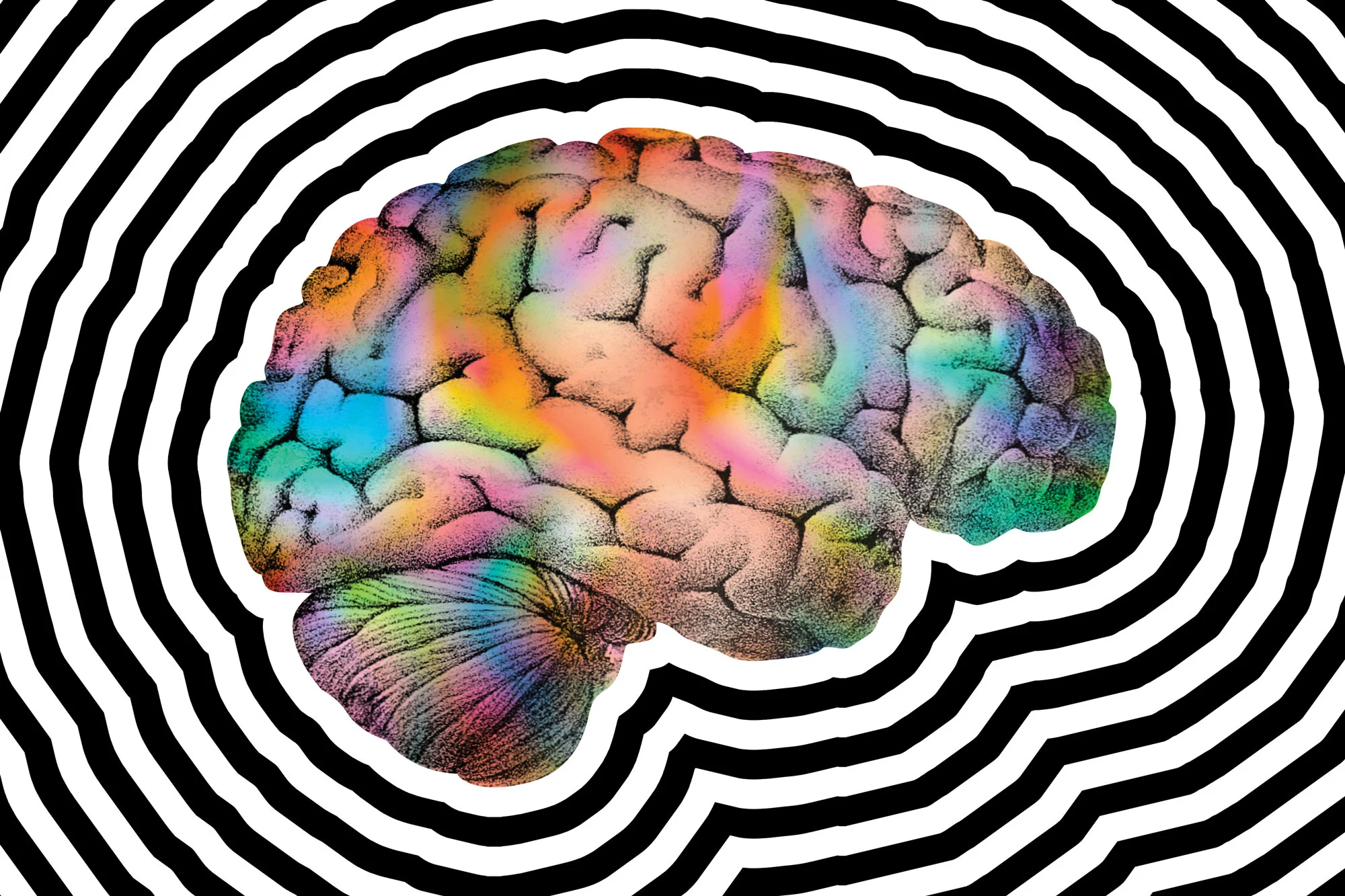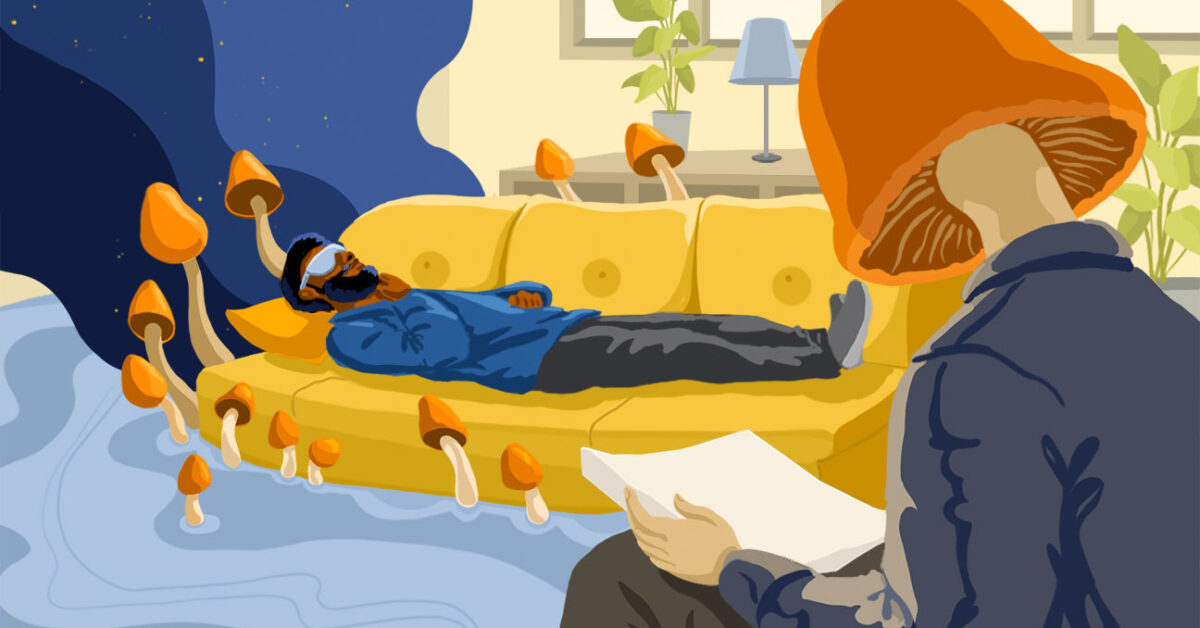By Gabriel García July 6, 2022
As Antón Gómez-Escolar tells us in his Essential Guide to the Psychedelic Renaissance, throughout history, psilocybin mushrooms have had various religious, ritual and shamanistic uses. Nowadays, its use can be associated with recreational, spiritual, self-knowledge contexts and, therapeutically, it is investigated for the treatment of depression, anxiety, post-traumatic stress disorder, addictions or obsessive-compulsive disorder.
But, how exactly does psilocybin act in our brain??

Antón Gómez-Escolar answers this question in his book, from which the information in this article is taken. The effects begin after ingesting the mushrooms or truffles (the latter being one of the legal psychedelic substances under certain circumstances). These vary depending on different circumstances, such as the context in which the person is under the effects of psilocybin, or the dose ingested. The most characteristic psychological effects are, in essence, changes in sensory perceptions, cognition and consciousness.
These changes may manifest themselves visually. This translates into a more intense perception of colors, movements in static elements surrounding the consumer, kaleidoscopic visions with closed eyes, tingling, thermal sensations or distortions in shapes. Another effect is synesthesia, which translates into the mixing of the senses (smelling colors or seeing sounds), and auditory alterations that may involve an increase in the appreciation of music and sounds.
These alterations are generally perceived as positive, and can be negative at certain times. This segmentation in stages is the reason why the psilocybin consumption experience is called a “trip”.
The effect of dissolution of personal and ego limits, and oceanic-type sensations, which are usually experienced with great peace and transcendence, can become therapeutic if guided by a specialist.
But, what happens in our brain to produce these effects?
As Antón Gómez-Escolar tells us, when psilocybin is absorbed by the stomach, it reaches the blood and begins to be converted into psilocin, which is responsible for the psychoactive effects, through dephosphorylation.
These effects occur once the psilocin reaches the brain and activates the serotonin neuroreceptors 5-HT2a and 5-HT1a, as is common in most psychedelics. On a physical level, this reaction is shown by the dilation of the pupils and a slight increase in tension, especially in high doses, although this increase is usually linked to the experiences that the person under the effects of psilocybin is living.
On the other hand, the activity of the amygdala, the center of the brain related to fear, can register a reduction in its activity, and therefore induce a positive bias in the perception of ourselves and our environment.
But it can also have counterproductive effects, such as producing a feeling of physical fatigue that is less inviting to movement or exploration than other psychedelics.

If you are interested in learning more about how this and other substances act in your brain, in addition to the Essential Guide to the Psychedelic Renaissance, we recommend Your Brain with Psychedelics, by Genís Oña. With this guide you will learn the keys to the effects of psychedelics, capable of producing significant changes in the processes of perception, thought and consciousness. The book also includes a prologue written by one of the greatest eminences in this field, José Carlos Bouso, scientific director of ICEERS.
The book, like the rest of the Psychonaut’s Guide series, is now available on Amazon in physical and eBook format, as well as Apple Books. In addition, all titles are available in Spanish version on GuiasdelPsiconauta.com




